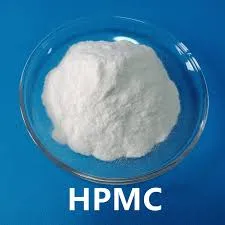
Nov . 04, 2024 15:42 Back to list
Synthesis Techniques and Innovations in High-Performance Composite Materials Research
HPMC Synthesis A Comprehensive Overview
Hydroxypropyl Methylcellulose (HPMC) is a versatile cellulose derivative widely used in various industries, including pharmaceuticals, food, and construction. The synthesis of HPMC involves the etherification of cellulose, a process that modifies the cellulose structure to enhance its solubility and functionality. This article delves into the synthesis of HPMC, its properties, applications, and the significance of this compound in modern industries.
The Synthesis Process
The synthesis of HPMC is primarily achieved through the chemical modification of cellulose, which is sourced mostly from wood pulp or cotton linter. The process begins with the dissolution of cellulose in an appropriate solvent, such as a mixture of water and alcohol. Once the cellulose is dissolved, propylene oxide and methyl chloride are introduced as etherifying agents.
The etherification reaction occurs in three key steps
1. Swelling The cellulose fibers swell in the solvent, creating a gel-like structure. This is crucial for allowing the etherifying agents to penetrate the cellulose matrix effectively. 2. Etherification The cellulose chains react with the etherifying agents. Hydroxypropyl and methyl groups are introduced into the cellulose structure. The ratio of propylene oxide to methyl chloride determines the degree of substitution, which in turn affects the solubility and viscosity of the final product. 3. Precipitation and Drying After the reaction, HPMC is precipitated from the solution, typically by adding a non-solvent such as isopropanol. The precipitate is then washed, dried, and ground into a fine powder.
Properties of HPMC
The degree of substitution (DS) and the average molecular weight of HPMC significantly influence its properties. Typically, HPMC is characterized by its high viscosity, which can be modified based on the concentration and molecular weight. The introduction of hydroxypropyl and methyl groups enhances its solubility in both cold and hot water, making it distinct from other cellulose derivatives.
HPMC is also known for its non-ionic nature, which means it does not ionize in solution. This property makes it an excellent emulsifier and stabilizer in various formulations. Additionally, HPMC has film-forming capabilities and is transparent, making it ideal for use in coatings and gel formulations.
hpmc synthesis

Applications of HPMC
The applications of HPMC are vast and varied, reflecting its unique properties
1. Pharmaceuticals HPMC is widely utilized as an excipient in drug formulations. It serves as a binder in tablets, a thickening agent in suspensions, and a controlled-release polymer for oral dosage forms.
2. Food Industry In food products, HPMC acts as a thickener, stabilizer, and emulsifier. It is commonly used in sauces, dressings, and bakery products, improving texture and extending shelf life.
3. Construction HPMC plays a crucial role in the construction industry, particularly in mortars and adhesives. It enhances workability, water retention, and adhesion properties, making it an essential component in tile adhesives and wall plasters.
4. Cosmetics and Personal Care In personal care products, HPMC is used for its thickening and film-forming properties. It is found in creams, lotions, and hair care products, providing stability and enhancing the product's sensory attributes.
Conclusion
HPMC synthesis is a significant process that contributes to a wide range of industries. Its unique properties and versatility make it an essential ingredient in pharmaceuticals, food, construction, and cosmetics. As research continues to evolve, innovations in HPMC production and applications are likely to emerge, further expanding the boundaries of its utility. Understanding HPMC synthesis not only highlights the chemical processes involved but also emphasizes the importance of this compound in enhancing product performance across various sectors.
-
Versatile Hpmc Uses in Different Industries
NewsJun.19,2025
-
Redispersible Powder's Role in Enhancing Durability of Construction Products
NewsJun.19,2025
-
Hydroxyethyl Cellulose Applications Driving Green Industrial Processes
NewsJun.19,2025
-
Exploring Different Redispersible Polymer Powder
NewsJun.19,2025
-
Choosing the Right Mortar Bonding Agent
NewsJun.19,2025
-
Applications and Significance of China Hpmc in Modern Industries
NewsJun.19,2025







